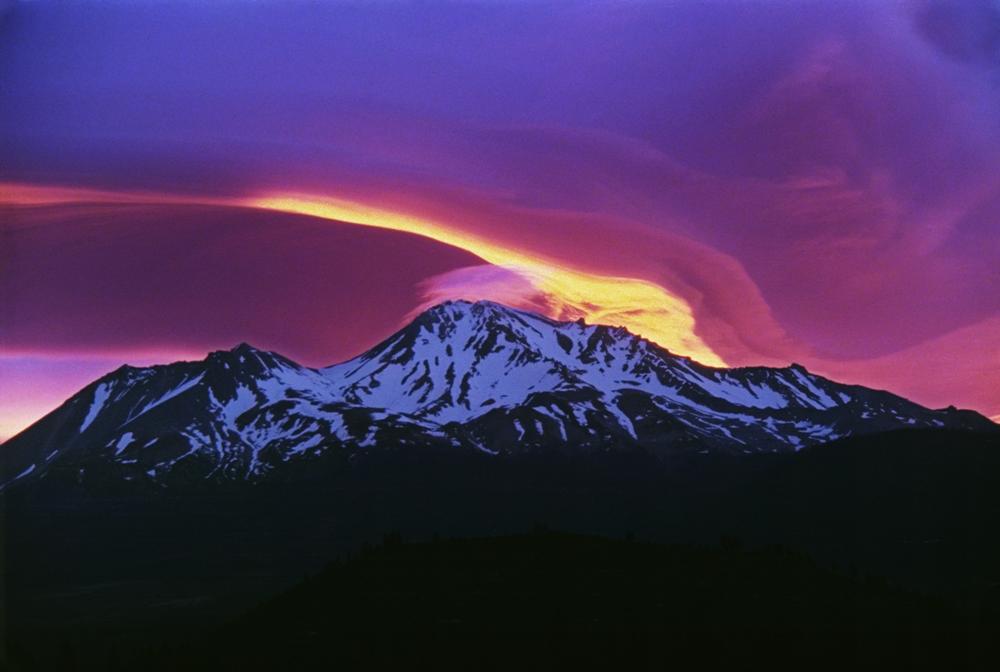Spring, summer, fall and winter—the seasons on Earth change every few months, around the same time every year. It’s easy to take this cycle for granted here on Earth, but not every planet has a regular change in seasons. So why does Earth have regular seasons when other planets don’t? …read more […]
|
|
||
|
Astronomers have performed multiwavelength observations of a nearby M-dwarf star known as EV Lacertae (or EV Lac for short). The observational campaign resulted in the detection of a new large stellar flare from this object. The finding was detailed in a paper published December 31 on the pre-print server arXiv. …read more […] Researchers have begun to use magnets to entangle qubits, the building blocks of quantum computers. This simple technique could unlock complex capabilities. …read more […] 
Mount Shasta is known as one of the most sacred places on Earth and is called by many people the magical mountain. The mountain is located in the Cascade Range in northern California. It rises around the picturesque mountains in the Siskiyou County at an altitude of over 4322 meters above sea level. It is also one of the largest dormant volcanoes. It is a legendary and mystical place since known history. Locals believe that this mountain is truly magical and there many mysteries and stories that have baffled and delighted, not only the local Native American population but also thousands …read more […] Be fast, avoid light, and roll through a curvy ramp: This is the recipe for a pioneering experiment proposed by theoretical physicists in a recent paper published in Physical Review Letters. An object evolving in a potential created through electrostatic or magnetic forces is expected to rapidly and reliably generate a macroscopic quantum superposition state. …read more […] Astronomers using NASA’s James Webb Space Telescope have found a brown dwarf (an object more massive than Jupiter but smaller than a star) with infrared emission from methane, likely due to energy in its upper atmosphere. This is an unexpected discovery because the brown dwarf, W1935, is cold and lacks a host star; therefore, there is no obvious source for the upper atmosphere energy. The team speculates that the methane emission may be due to processes generating aurorae. …read more […] A private US lunar lander mission is doomed to fail, and NASA pushes back plans to return astronauts to the moon. …read more […] China’s space agency said Wednesday that its latest lunar explorer had arrived at the launch site in preparation for a mission to the moon in the first half of this year. …read more […] 
The Dighton rock is without a doubt one of the most mysterious findings of the Americas. The rock with mysterious cuneiform-style inscriptions has been the subject of intense debate among researchers and scholars for centuries, yet no one has been able to properly explain its origin nor decipher it. The 40-ton boulder approximately 1.5 meters in height, 2.9 in width and 3.4 meters length was found partially submerged in the Taunton River in Massachusetts. The mysterious boulder, covered in petroglyphs and intricate ancient designs has been installed in …read more […] Nube is an almost invisible dwarf galaxy discovered by an international research team led by the Instituto de Astrofísica de Canarias (IAC) in collaboration with the University of La Laguna (ULL) and other institutions. …read more […] A rapid reshaping of orbits resulting from a close encounter with Jupiter or Saturn can lead Centaurs to exhibit comet-like activity, according to a Planetary Science Institute Senior Scientist Eva Lilly paper. …read more […] A study led by the University of Oxford has used the power of machine learning to overcome a key challenge affecting quantum devices. For the first time, the findings reveal a way to close the “reality gap”: the difference between predicted and observed behavior from quantum devices. The results have been published in Physical Review X. …read more […] Astronomers have discovered that the supermassive black holes in the centers of early galaxies are much more massive than expected. These surprisingly hefty black holes offer new insights into the origins of all supermassive black holes, as well as the earliest stages of their host galaxy’s lives. …read more […] In a review published on 1 January 2024, in the journal Microsystems & Nanoengineering, researchers discuss hydrogels in photonics, highlighting their potential to revolutionize the field. The article emphasizes how hydrogels enable devices to adapt and respond to their environment, promising significant advances in technology and biomedicine. …read more […] Astronauts will have to wait until next year before flying to the moon and another few years before landing on it, under the latest round of delays announced by NASA on Tuesday. …read more […] |
||
|
Copyright © 2025 Paranormal News Network - All Rights Reserved Powered by WordPress & Atahualpa 130 queries. 0.343 seconds. |
||

